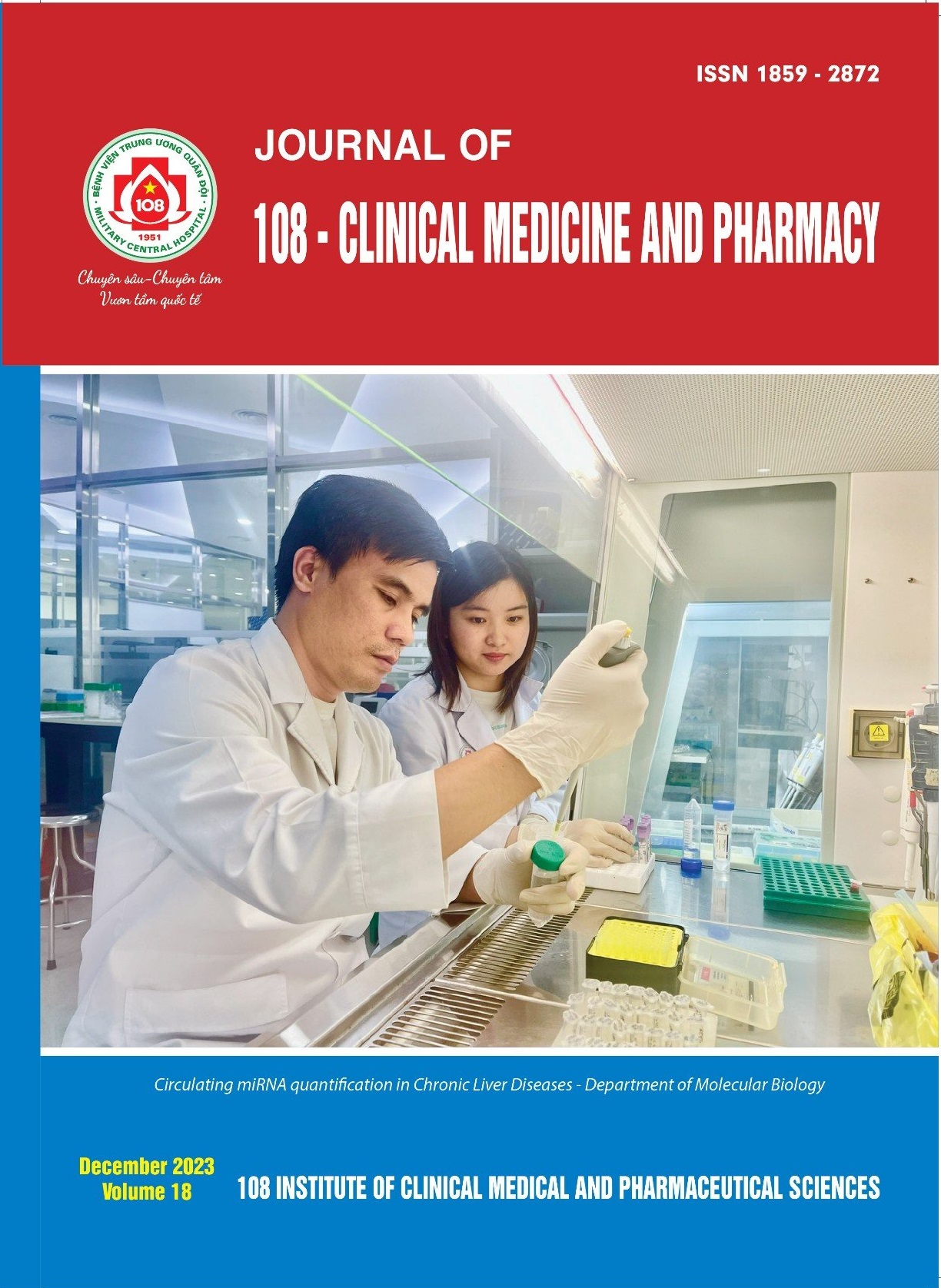Study on the correlation between prefrontal cortex thickness and alcohol addiction using magnetic resonance imaging in alcohol-dependent patients
Main Article Content
Keywords
Tóm tắt
Objective: To investigate the correlation between alcohol addiction and prefrontal cortex thickness using magnetic resonance imaging (MRI). Subject and method: Conducted at the Thai Nguyen National Hospital from 2020 to 2022, the cross-sectional study involved 70 alcohol-dependent individuals and 70 healthy counterparts. Participants, right-handed males, were categorized based on DSM-5 criteria diagnosed with alcoholism or no by a psychiatrist. MRI imaging, employing a Siemens 1.5 Tesla scanner, captured brain structural data. Statistical analysis included Student's t-test and multivariate linear regression models. Result: While age and intracranial volume showed no significant differences between healthy and addicted groups, BMI differed significantly. Dorsolateral prefrontal cortex thickness reductions were observed in various regions for the alcoholic group, with significant correlations (p<0.001). Age and intracranial volume emerged as predictors for specific regions. Conclusion: Alcohol addiction is associated with decreased gray matter thickness in the prefrontal cortex, emphasizing the role of age and intracranial volume in predicting these structural changes. The study underscores the need for further research to comprehensively understand the complexities of alcohol-induced brain damage.
Article Details
Các tài liệu tham khảo
2. Degenhardt L, Charlson F, Ferrari A et al (2018) The global burden of disease attributable to alcohol and drug use in 195 countries and territories, 1990-2016: A systematic analysis for the Global Burden of Disease Study 2016. Lancet Psychiatry 5(12): 987-1012.
3. Koob GF and Volkow ND (2016) Neurobiology of addiction: A neurocircuitry analysis. Lancet Psychiatry 3(8): 760-773.
4. American Psychiatric Association and American Psychiatric Association eds (2013) Diagnostic and statistical manual of mental disorders: DSM-5. American Psychiatric Association, Washington, D.C.
5. Dale AM, Fischl B el al (1999) Cortical Surface-Based Analysis. Neuro Image: 179-194.
6. Fischl B, Sereno MI, Dale AM (1999) Cortical Surface-Based Analysis. NeuroImage 9: 195-207.
7. Desikan RS, Ségonne F, Fischl B, Quinn BT, Dickerson BC, Blacker D et al (2006) An automated labeling system for subdividing the human cerebral cortex on MRI scans into gyral based regions of interest. NeuroImage 31(3): 968-980.
8. Durazzo TC, Tosun D, Buckley S et al (2011) Cortical thickness, surface area, and volume of the brain reward system in alcohol dependence: relationships to relapse and extended abstinence: brain reward system in relapse and abstinence. Alcohol Clin Exp Res 35(6): 1187-1200.
9. Morris VL, Owens MM, Syan SK et al (2019) Associations Between Drinking and Cortical Thickness in Younger Adult Drinkers: Findings from the Human Connectome Project. Alcohol Clin Exp Res 43(9): 1918-1927.
10. Stevens BW, Morris JK, Diazgranados N et al (2022) Common Gray Matter Reductions in Alcohol Use and Obsessive-Compulsive Disorders: A Meta-analysis. Biol Psychiatry Glob Open Sci 2(4): 421-431.
11. Yang K, Yang Q, Niu Y et al (2020) Cortical Thickness in Alcohol Dependent Patients with Apathy. Front Psychiatry 11: 364.
12. Nakamura K, Iwahashi K, Furukawa A et al (2003) Acetaldehyde adducts in the brain of alcoholics. Arch Toxicol 77(10): 591-593.
13. Harper C, Kril J and Daly J (1987) Are we drinking our neurones away? Br Med J (Clin Res Ed) 294(6571):534-6. doi: 10.1136/bmj.294.6571.534.
14. Harper C and Corbett D (1990) Changes in the basal dendrites of cortical pyramidal cells from alcoholic patients-a quantitative golgi study. J Neurol Neurosurg Psychiatry 53(10): 856-861.
15. Harper C and Kril J (1989) Patterns of neuronal loss in the cerebral cortex in chronic alcoholic patients. J Neurol Sci 92(1): 81-89.
 ISSN: 1859 - 2872
ISSN: 1859 - 2872
